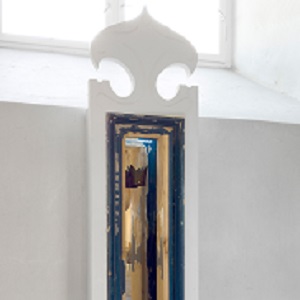Creative multimodal practices. Attempts on articulations from social semiotics and contemporary relational craft
DOI:
https://doi.org/10.7577/formakademisk.593Keywords:
multimodality, social semiotics, art and craft, creative processes, learning processesAbstract
During the last decades, we have seen that communication in general is changing and becoming more multimodal in the sense that various modalities such as language, pictures, sound and materiality are combined and integrated. These tendencies, which are often referred to as the multimodal turn, lead to an increased need for field-specific and advanced knowledge of how to work with multimodal creative practices. This article explores how aspects from the theoretical framework of social semiotics may be applied in the field of creative multimodal practices and learning. In the article, we present some epistemological links between social semiotics and contemporary relational craft. Some theoretical concepts are suggested and explored through examples from creative and didactical projects. Our conclusion is that the suggested theoretical concepts can be used to enhance critical thinking in creative processes and promote more precise communication between craft artists, teachers, critics, and representatives of other creative practices.
Downloads
Published
2013-04-21
How to Cite
Thorsnes, T., & Veum, A. (2013). Creative multimodal practices. Attempts on articulations from social semiotics and contemporary relational craft. FormAkademisk, 6(1). https://doi.org/10.7577/formakademisk.593
Issue
Section
Articles
License
Authors who publish with this journal agree to the following terms:
- Authors retain copyright and grant the journal right of first publication with the work simultaneously licensed under a Creative Commons Attribution 4.0 License that allows others to share the work with an acknowledgement of the work's authorship and initial publication in this journal.
- Authors are able to enter into separate, additional contractual arrangements for the non-exclusive distribution of the journal's published version of the work (e.g., post it to an institutional repository or publish it in a book), with an acknowledgement of its initial publication in this journal.
- Authors are permitted and encouraged to post their work online (e.g., in institutional repositories or on their website) prior to and during the submission process, as it can lead to productive exchanges, as well as earlier and greater citation of published work (See The Effect of Open Access).
- The author(s) must manage their economic reproduction rights to any third party.
- The journal makes no financial or other compensation for submissions, unless a separate agreement regarding this matter has been made with the author(s).
- The journal is obliged to archive the manuscript (including metadata) in its originally published digital form for at least a suitable amount of time in which the manuscript can be accessed via a long-term archive for digital material, such as in the Norwegian universities’ institutional archives within the framework of the NORA partnership.
The material will be published OpenAccess with a Creative Commons 4.0 License which allows anyone to read, share and adapt the content, even commercially under the licence terms:
This work needs to be appropriately attributed/credited, a link must be provided to the CC-BY 4.0 licence, and changes made need to be indicated in a reasonable manner, but not in any way that suggests that the licensor endorses you or your use.



